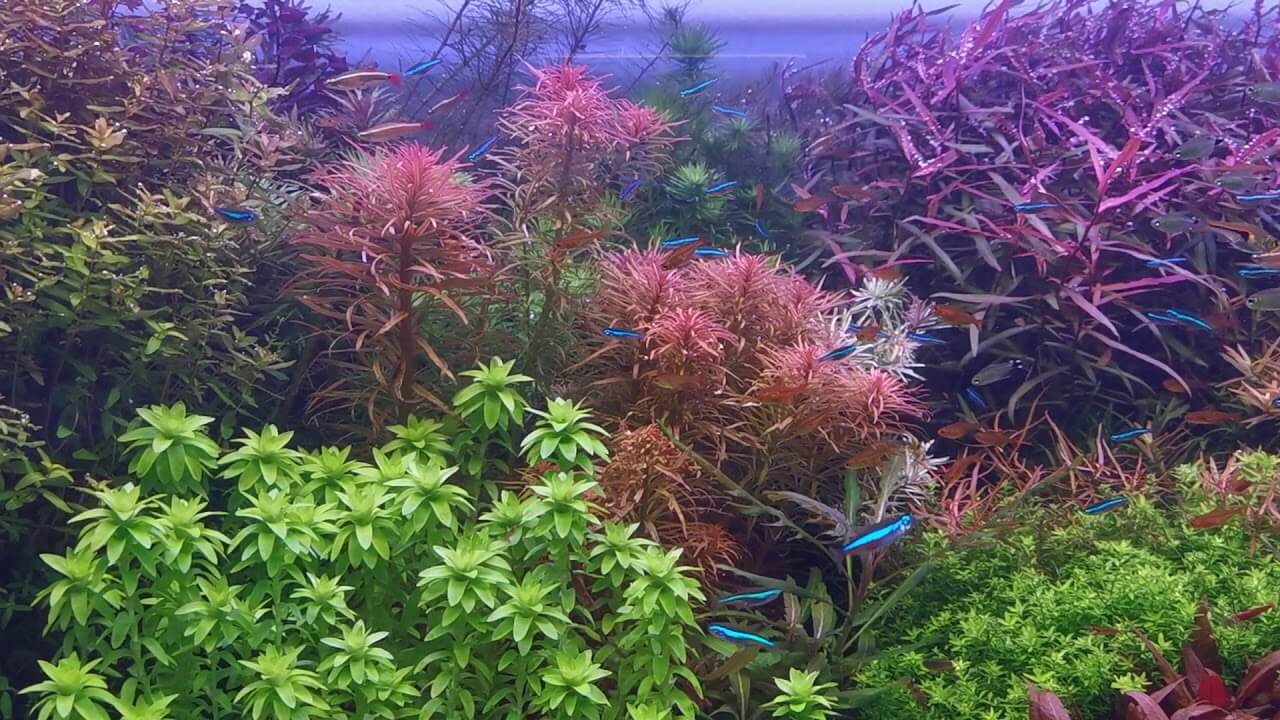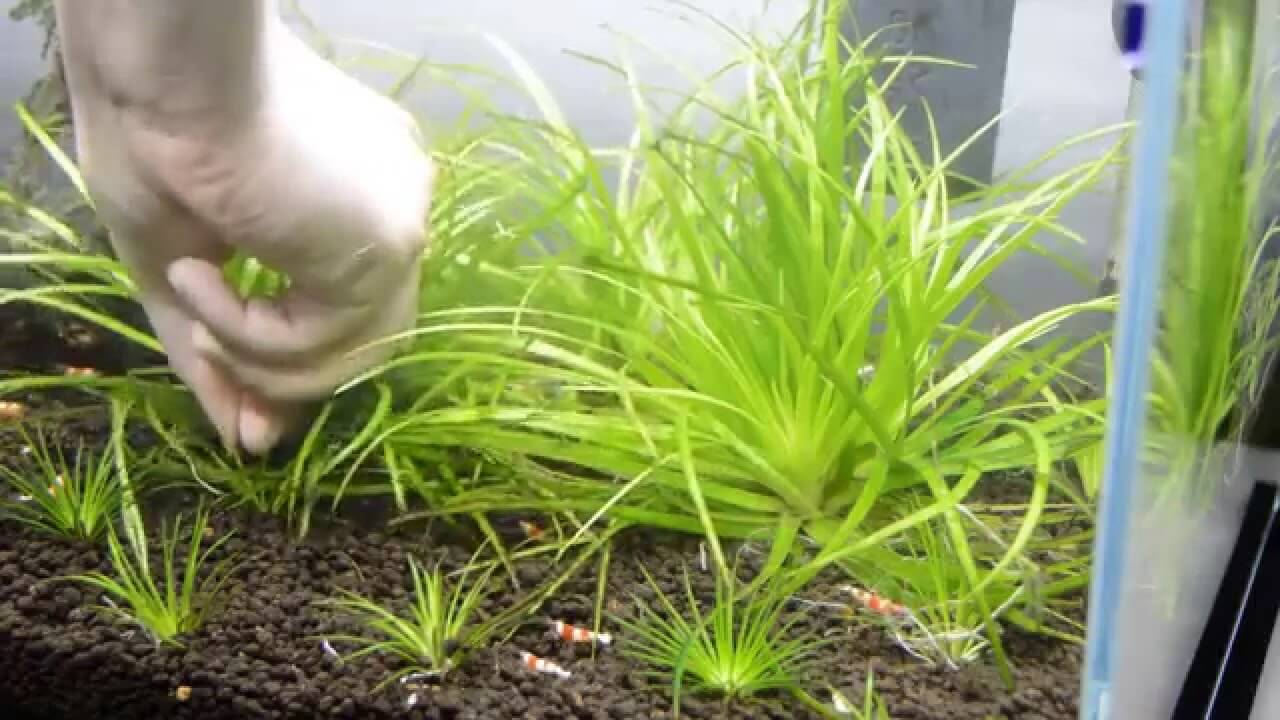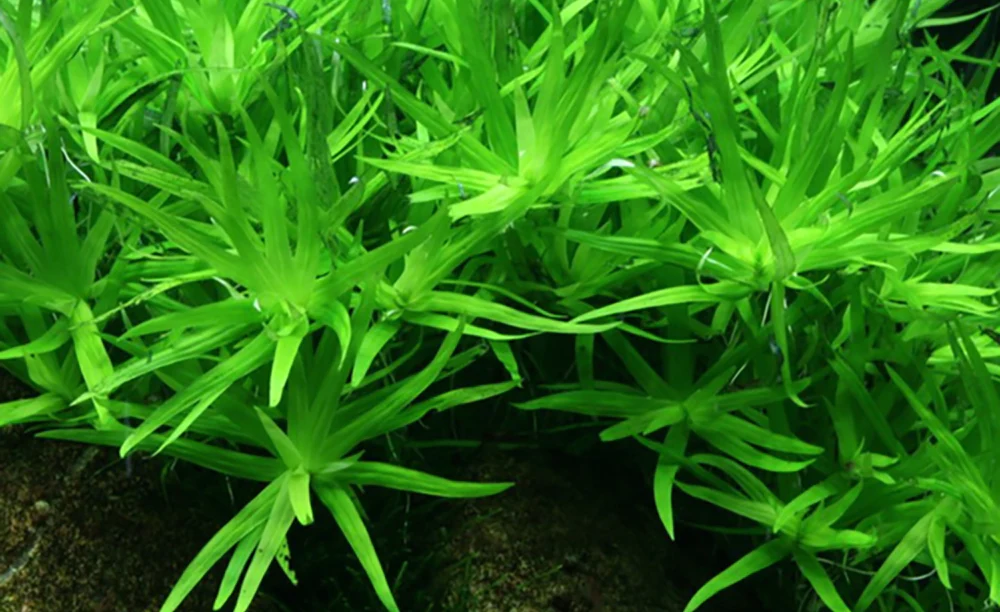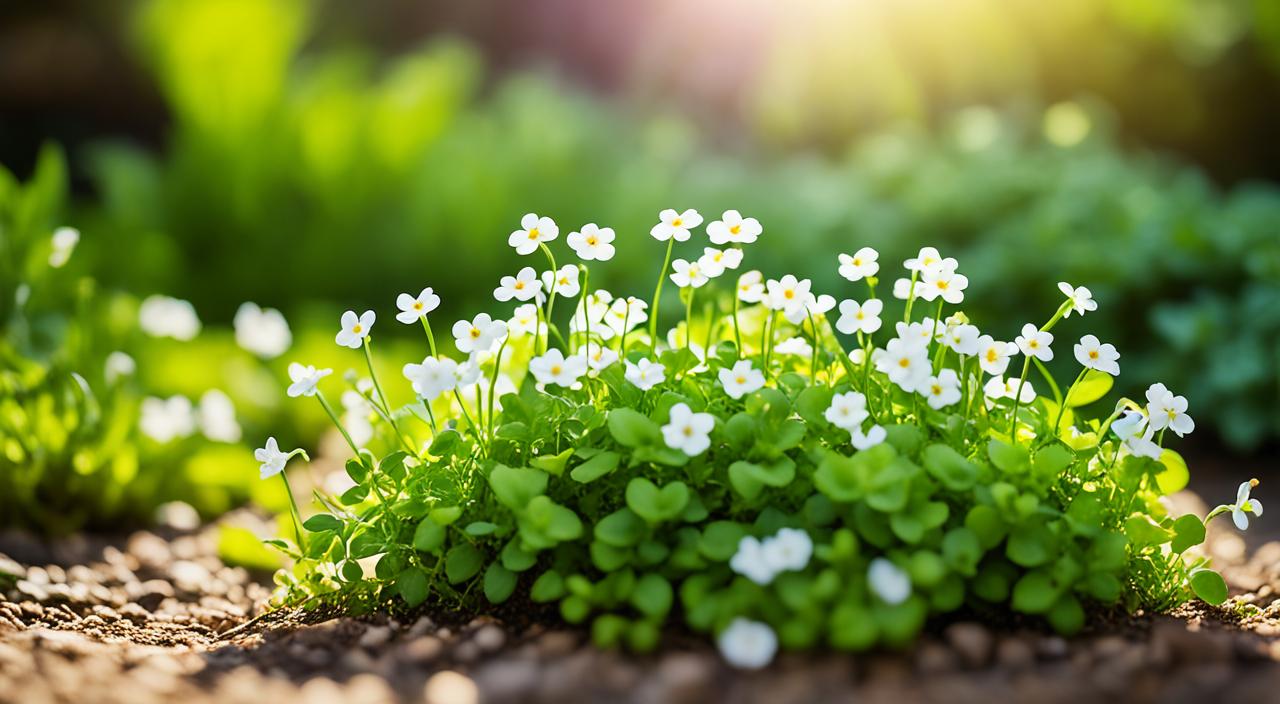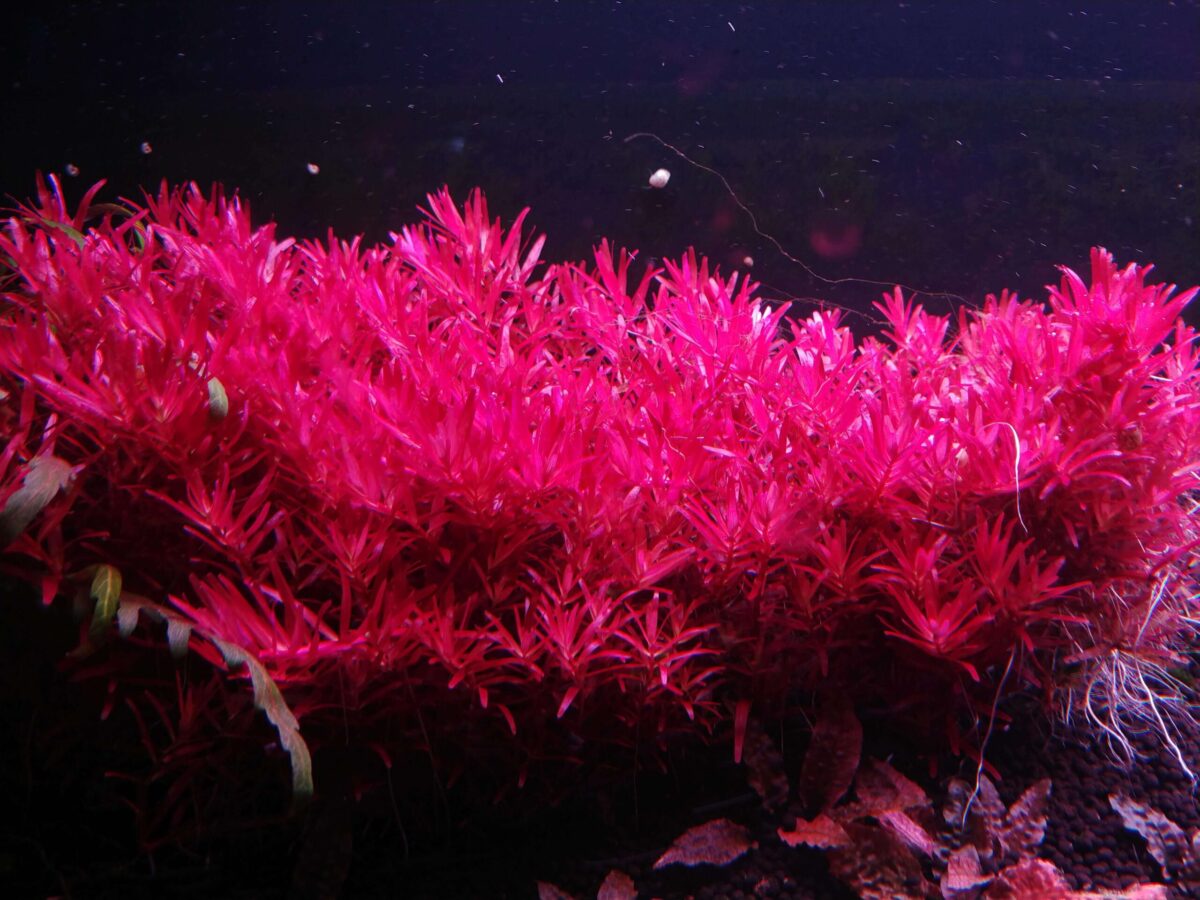G’day mates! Today, I want to talk about a captivating aquatic plant that can bring colour to your aquarium – Ludwigia inclinata verticillata. This vibrant plant, also known as Cuba, is popular among aquarists looking to create a visually stunning underwater landscape.
Ludwigia inclinata verticillata is a stem plant that belongs to the Onagraceae family and is native to Cuba. Its rich red colouration and fast growth make it a sought-after option for those who want to add some pizzazz to their tank. However, this plant requires specific care to thrive.
Proper lighting is essential for Ludwigia inclinata verticillata. It needs high light levels to flourish and maintain its vibrant hues. Additionally, supplementing CO2 is necessary for its growth. This plant can be placed in the background of your aquarium, reaching heights up to 50 centimetres or more.
Water quality and regular fertilization are crucial for the health and colouration of Ludwigia inclinata verticillata. It is an actual aquatic plant that thrives in optimal conditions. With fast growth and the ability to be propagated through cuttings, it’s no wonder this plant is popular among advanced aquascapers.
Key Takeaways:
- Ludwigia inclinata verticillata, also known as Ludwigia inclinata var. verticillata or Cuba, is a stunning red aquatic plant native to Cuba.
- This plant requires high light levels and supplemental CO2 to thrive, making it an excellent choice for aquariums with ample lighting.
- Proper water quality and regular fertilization are necessary to maintain the health and vibrant colouration of Ludwigia inclinata verticillata.
- It can be placed in the background of your aquarium, where it can reach impressive heights and create a beautiful focal point.
- Ludwigia inclinata verticillata can be propagated through cuttings, making it a popular choice for advanced aquascapers.
Brief Overview Of Ludwigia inclinata verticillata
Ludwigia inclinata verticillata, also known as Cuba, is popular among aquarists due to its stunning red colouration and fast growth. It is a stem plant from Cuba and is commonly found in the hobby. To thrive, this plant requires high light levels, supplemental CO2, and regular nutrients. It can be placed in the background of your aquarium, creating a beautiful focal point. Proper care and maintenance are essential to ensure the health and vibrancy of Ludwigia inclinata verticillata.
Ludwigia inclinata verticillata Information Table:
| Row Names | Descriptions |
|---|---|
| Scientific name: | Ludwigia inclinata verticillata |
| Common Names: | Whorly Ludwigia, Ludwigia inclinata ‘Cuba’ |
| Origin: | Central and South America |
| Height: | Up to 20 inches (50 cm) |
| Growth Rate: | Moderate to Fast |
| Colour: | Depending on light and nutrient conditions, leaves range from green to deep red. |
| Aquarium Placement: | Midground to Background |
| Water Type: | Freshwater |
| pH: | 5.0 – 7.0 |
| Care Level: | Advanced |
| Light Requirements: | High – CO2 supplementation is necessary for optimal growth and colour development. |
| CO2 Requirements: | High – CO2 supplementation is necessary for optimal growth and color development. |
| Temperature: | 68°F – 82°F (20°C – 28°C) |
| Flow Rate: | Moderate to High – Prefers good water circulation but not direct strong flow. |
| Propagation: | Cut stem and replant. Easy to propagate by cutting the top or side shoots. |
| Feed Type: | Requires nutrient-rich substrate and liquid fertilizers for best growth. |
In the following sections, we will delve deeper into the specifics of this plant’s origins, habitat, morphological characteristics, placement and lighting requirements, tank mates, feeding and fertilization, CO2 injection, care guidelines, aquarium maintenance, health and disease considerations, and provide a summary of the key points discussed. Whether you are a beginner or an experienced aquarist, this article will supply you with the knowledge needed to cultivate Ludwigia inclinata verticillata in your aquarium successfully.
Origins And Habitat
Ludwigia inclinata verticillata, commonly known as Cuba, is a plant native to the small island of Cuba in the Caribbean. It is a variety of Ludwigia inclinata, a widespread and variable species in South and Central America. Ludwigia inclinata verticillata ‘Cuba’ is found only on this small island.
Morphological Characteristics
Ludwigia inclinata verticillata is a stem plant that can grow quite tall in its submerged form. Its stems are upright and can reach up to 50 centimetres or more. The plant has delicate reddish leaves that spread out from a central stem, forming dense foliage.
Placement And Lighting
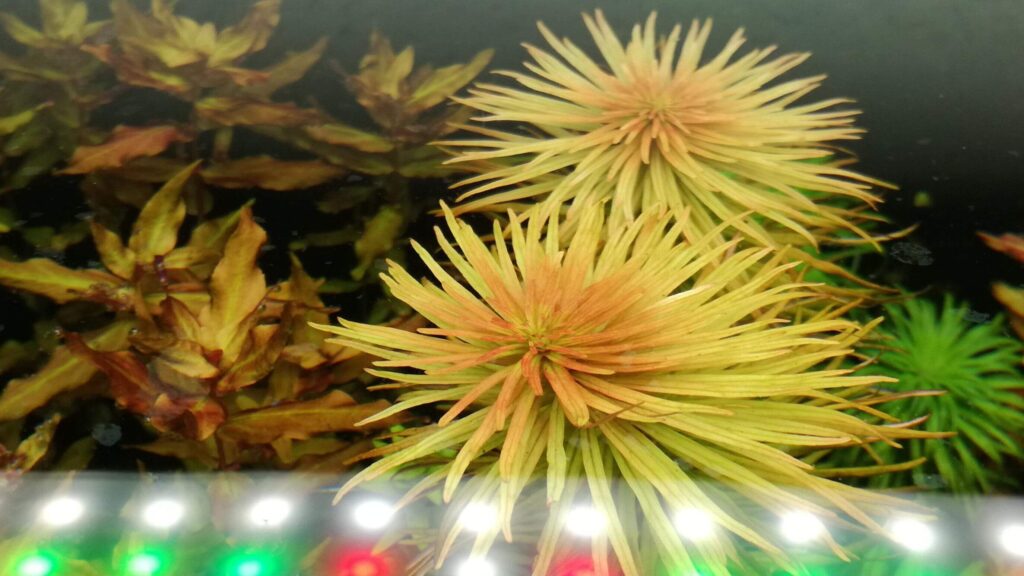
Proper placement and lighting are crucial for the successful growth of Ludwigia inclinata verticillata. This plant is typically placed in the background of the aquarium, where it can grow to its full height and create a stunning focal point.
| Placement | Lighting |
|---|---|
| Ludwigia inclinata verticillata should be placed in the background of the aquarium, as it can grow tall and create an attractive visual backdrop for the tank. | Consider using a timer to maintain consistent lighting durations, giving the plant a photoperiod of 8-12 hours. |
| Placing Ludwigia inclinata verticillata in the background allows it to receive sufficient light without shading other plants in the tank. | Consider using a timer to maintain consistent lighting durations, giving the plant a photoperiod of 8-12 hours. |
| Ensure enough space between Ludwigia inclinata verticillata and other plants to allow for proper growth and prevent overcrowding. | Monitor the light intensity and adjust as needed to prevent excessive algae growth or light stress on the plant. |
What Are Good Tank Mates?
When choosing tank mates for Ludwigia inclinata verticillata, it is essential to consider the plant’s requirements and its compatibility with other fish species. While this plant can coexist with various aquatic creatures, certain factors must be considered to ensure a harmonious environment.
Good Tank Mates
When selecting tank mates for Ludwigia inclinata verticillata, choosing species with similar care requirements and compatible with the plant’s needs is essential. Here are some suitable tank mates to consider:
- Guppies
- Tetras
- Mollies
- Platies
- Danios
- Rasboras
- Snails
- Shrimp
Fish Species To Avoid
While Ludwigia inclinata verticillata can thrive with many fish species, certain fish may not be suitable tank mates due to their behaviours or specific requirements. Here are some fish species to avoid when keeping Ludwigia inclinata verticillata:
- Cichlids – Some cichlids may damage the delicate stems and leaves of the plant.
- Goldfish – Goldfish are known to be herbivorous and may consume or uproot the plant.
- Enormous, aggressive fish – Aggressive species may harass or prey on the plant and other tank mates.
Feeding (Fertilization)
Proper fertilization is essential for meeting the nutrient requirements of Ludwigia inclinata verticillata and maintaining its vibrant colouration. Several methods and products can provide the necessary nutrients for this red aquarium plant.
How Much And How Often To Feed
When fertilizing Ludwigia inclinata verticillata, it is vital to balance and provide enough nutrients for healthy growth and avoid nutrient imbalances that can harm the plant and the aquarium ecosystem.
Following a regular feeding schedule is generally recommended to ensure consistent nutrient availability. This can be achieved using a complete liquid fertilizer or root tabs specifically formulated for aquarium plants. These products contain essential macro and micronutrients vital for the growth and development of Ludwigia inclinata verticillata.
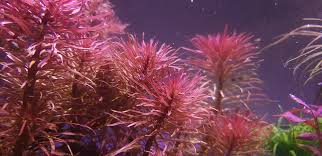
The feeding schedule may vary depending on the product used and the individual aquarium conditions. As a general guideline, it is recommended to fertilize Ludwigia inclinata verticillata once or twice a week, following the instructions provided by the fertilizer manufacturer.
It is essential to monitor the plant closely and assess its nutrient needs. Suppose the plant shows signs of nutrient deficiency, such as pale or yellowing leaves, stunted growth, or reduced colour intensity. In that case, it may indicate the need for more frequent or higher dosage fertilization. On the other hand, excessive fertilization can lead to algae overgrowth and other water quality issues. Therefore, finding the right balance and adjusting the feeding schedule based on the plant’s response is crucial.
Regularly test the aquarium water parameters to ensure that the nutrient levels are within the appropriate range for Ludwigia inclinata verticillata and other aquatic inhabitants.
To optimize the feeding process and minimize nutrient losses, consider incorporating a nutrient-rich substrate and maintaining a stable and efficient filtration system in the aquarium. This will help provide a consistent source of nutrients for the plant and support its overall well-being.
| Fertilization Method | Advantages | Disadvantages |
|---|---|---|
| Liquid Fertilizer | – Easy to dose – Provides a wide range of nutrients – Can be easily adjusted based on the plant’s needs | – Requires regular dosing – May contribute to nutrient fluctuations if not used consistently |
| Root Tabs | – Provides nutrients directly to the plant’s roots – Long-lasting effect – Convenient for root feeders | – Need to be replaced periodically – Limited nutrient variety compared to liquid fertilizers |
| Substrate Enrichment | – Provides a continuous nutrient supply – Supports root development – Enhances overall plant health | – Requires initial setup and substrate replacement if necessary – Limited to rooted plants |
CO2 Injection
Carbon dioxide (CO2) supplementation is often necessary for the successful growth of Ludwigia inclinata verticillata, as it is a plant that benefits significantly from elevated CO2 levels. CO2 injection provides aquatic plants with a vital ingredient for photosynthesis, promoting healthy growth and vibrant colouration.
Several methods of injecting CO2 into aquariums, each with benefits and considerations. The choice of CO2 injection method will depend on the specific requirements of your aquarium setup and your personal preferences.
One standard method is to use a CO2 diffuser, which releases tiny bubbles of CO2 into the water column. The diffuser ensures efficient distribution of CO2 throughout the aquarium, allowing the plants to utilize it effectively.
Another popular method is the CO2 injection system, which consists of a CO2 cylinder, regulator, and diffuser. This system provides precise control over the amount of CO2 being injected into the aquarium, allowing for optimal dosing based on the needs of the plants.
CO2 tablets or liquid carbon supplements are also available as alternative options. These products provide a convenient way to supplement CO2 without complex equipment. However, they may not be as effective as other methods in providing a consistent supply of CO2.
Regardless of the method chosen, it is vital to monitor CO2 levels regularly and adjust the dosage accordingly. High CO2 levels can be detrimental to fish and other aquatic organisms, so it is essential to strike the right balance.
Care
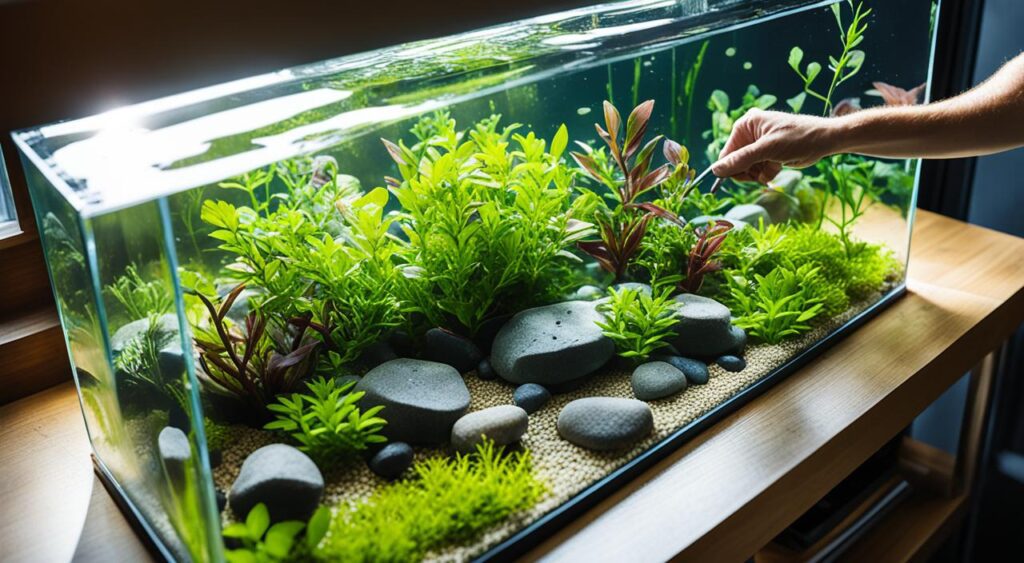
Planted Tank Parameters
Creating the optimal environment for Ludwigia inclinata verticillata is crucial for long-term health and growth. To provide the best conditions for this plant in your planted tank, consider the following parameters:
- Lighting: Ludwigia inclinata verticillata thrives in high light environments. Ensure that your planted tank receives sufficient brightness to support the plant’s photosynthesis.
- Temperature: Maintain a temperature range of 22-28°C (72-82°F) for optimal growth. Avoid drastic temperature fluctuations to prevent stress on the plant.
- pH level: Ludwigia inclinata verticillata prefers slightly acidic to neutral water with a pH range of 6.0-7.5. Regularly monitor and adjust the pH level as needed.
- Substrate: A nutrient-rich substrate, such as aquarium soil or a specialized plant substrate, can provide essential nutrients for the plant’s root development.
- Cycling: Before introducing Ludwigia inclinata verticillata to your planted tank, ensure the aquarium has completed the nitrogen cycling process. This helps establish a stable and healthy environment.
Water Quality
Maintaining good water quality is crucial for the well-being of Ludwigia inclinata verticillata. Follow these guidelines to ensure optimal water conditions:
- Water Parameters: Regularly test the water parameters, including ammonia, nitrite, nitrate, and phosphate levels, to ensure they are within the appropriate range for the plant’s health.
- Water Changes: Perform regular water changes to remove accumulated toxins and maintain stable water conditions. Aim for a weekly water change of 20-30%.
- Water Circulation: Adequate water circulation helps distribute nutrients and prevents the formation of stagnant areas. Use a quality aquarium filter and consider adding a powerhead or circulation pump if needed.
Filtration
An efficient filtration system is crucial for maintaining water clarity and removing debris that can negatively impact Ludwigia inclinata verticillata. Consider the following tips for filtration:
- Filter Type: Choose a filter that suits the size of your planted tank and provides adequate mechanical, chemical, and biological filtration.
- Media Maintenance: Regularly clean or replace filter media to prevent clogging and maintain proper filtration efficiency.
- Avoid Strong Flow: While Ludwigia inclinata verticillata benefits from gentle water movement, avoid excessive flow that can damage delicate leaves and stems. Adjust the outlet or use a spray bar to disperse the flow.
Flow
Proper water flow is essential for Ludwigia inclinata verticillata’s overall health and growth. Consider the following guidelines for achieving an optimal flow:
- Avoid Dead Spots: Ensure no stagnant areas in your planted tank. Position the filter outlet or use a circulation pump to create gentle water movement throughout the tank.
- Gentle Flow: Ludwigia inclinata verticillata prefers gentle water flow to avoid damage to its delicate leaves. Use diffusers or adjust the flow rate to minimize disturbance.
| Planted Tank Parameters | Water Quality | Filtration | Flow |
|---|---|---|---|
| Lighting | Water Parameters | Filter Type | Avoid Dead Spots |
| Temperature | Water Changes | Media Maintenance | Gentle Flow |
| pH level | Water Circulation | Avoid Strong Flow | |
| Substrate | |||
| Cycling |
Aquarium Maintenance
Testing Water Conditions
Regular testing of water conditions is essential for maintaining a healthy environment for Ludwigia inclinata verticillata. By monitoring key parameters, you can ensure that the water quality meets the specific requirements of this red aquarium plant. Take note of the following parameters:
- pH level: Ludwigia inclinata verticillata thrives in a slightly acidic to neutral pH range of 6.0-7.5.
- Temperature: The ideal temperature for this plant is around 72-82°F (22-28°C).
- Ammonia, nitrite, and nitrate levels: These parameters should be kept safe and stable to prevent toxicity and promote plant growth.
- Lighting intensity: Verify that the lighting intensity is within the optimal range for Ludwigia inclinata verticillata. High light conditions are essential for its growth.
- Hardness: Soft to moderate water hardness is generally favourable for this plant.
- CO2 levels: Ludwigia inclinata verticillata benefits from adequate CO2 to ensure an appropriate carbon dioxide supply.
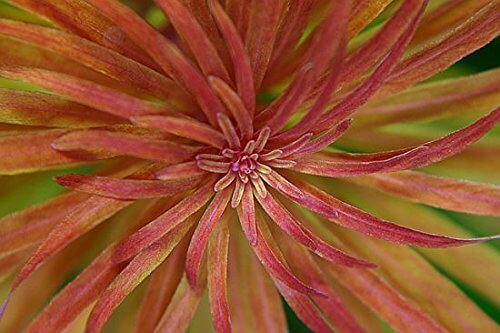
How To Set Up Your Aquarium Tank
Setting up an aquarium tank is crucial for creating a suitable habitat for Ludwigia inclinata verticillata. Follow these steps to ensure the best conditions for this red aquarium plant:
- Tank selection: Choose an aquarium tank with a suitable size and shape to accommodate the growth potential of Ludwigia inclinata verticillata. Consider its height to provide sufficient space for the plant’s tall stems.
- Substrate: Select a nutrient-rich substrate that supports plant growth. It should have a granular texture to allow proper root penetration.
- Placement: Place Ludwigia inclinata verticillata in the aquarium’s background, providing ample space to grow vertically and create a striking focal point.
- Lighting: Install high-quality aquarium lighting fixtures capable of providing the required intensity for this plant. LED lights are popular as they offer energy efficiency and customizable settings.
- Filtration: Choose an appropriate filter that provides adequate water circulation and maintains good water quality. Consider the tank size and the needs of other tank inhabitants.
- Heating: Install a reliable aquarium heater to maintain a stable temperature within the recommended range for Ludwigia inclinata verticillata.
Propagation Methods
To propagate Ludwigia inclinata verticillata, you have several methods at your disposal:
- Stem cuttings: This is the most common and straightforward method. Cut a healthy stem of Ludwigia inclinata verticillata and plant it in the substrate. Over time, it will develop roots and grow into a new plant.
- Side shoots: Ludwigia inclinata verticillata occasionally produce side shoots or offshoots from the main stem. These can be separated and replanted independently.
- Adventitious roots: In some cases, Ludwigia inclinata verticillata may develop adventitious roots along its stem. These roots can be gently pressed into the substrate, where they will grow into new plants.
By employing these propagation methods, you can expand your collection of Ludwigia inclinata verticillata and enhance the visual appeal of your aquarium.
Health And Disease
Monitoring the health of Ludwigia inclinata verticillata is crucial to ensure its long-term success in the aquarium. This section will cover identifying signs of good and poor health, joint health issues and treatment options, and plant pests that can affect the plant.
Signs Of Good Health
When Ludwigia inclinata verticillata is healthy, it will exhibit the following signs:

- The rich, vibrant red colouration of the leaves
- Strong and sturdy stems
- Fast and steady growth
- No signs of discolouration, holes, or spots on the leaves
- Roots firmly anchored in the substrate
Regularly comparing the plant’s current condition with these indicators will help assess its overall health.
Signs Of Poor Health
If Ludwigia inclinata verticillata is not in optimal health, it may exhibit the following signs:
- Wilting or drooping leaves
- Loss of vibrant red colouration
- Yellowing or browning of leaves
- Stunted or slow growth
- Decaying or rotting stems or leaves
If any of these signs are observed, it is essential to promptly identify and address the underlying issues to prevent further deterioration or potential loss of the plant.
Common Health Issues And Treatment
Ludwigia inclinata verticillata can be susceptible to several common health issues. Here are some of them and the corresponding treatment options:
| Health Issue | Treatment |
|---|---|
| Nutrient deficiency | Regularly fertilize the aquarium with a comprehensive plant fertilizer to provide essential nutrients. |
| Algae overgrowth | Control the nutrient levels in the tank, maintain proper lighting intensity and duration, and consider introducing algae-eating fish or invertebrates. |
| Disease or infection | Isolate affected plants, improve water conditions, and consider using appropriate treatments such as antifungal or antibacterial medications. |
| CO2 deficiency | Consider supplementing CO2 in the aquarium to ensure optimum plant growth and health levels. |
If unsure about the specific health issue or treatment, consulting with experienced aquarists or seeking professional advice can be beneficial.
Plant Pests
Ludwigia inclinata verticillata may also be susceptible to various plant pests that can negatively impact its health. Some common plant pests in aquariums include:
- Snails
- Algae-eating fish or invertebrates
While these pests may not directly harm the plant, they can cause damage or consume the plant if not controlled. Introducing appropriate pest control measures, such as manual removal or using snail-eating fish, can help mitigate their impact on the plants.
Summary
In conclusion, Ludwigia inclinata verticillata, also known as Cuba, is a captivating red aquatic plant that can enhance the visual appeal of your aquarium. To ensure its optimal growth and vibrancy, it is crucial to provide high-lighting conditions and supplement it with CO2 and regular nutrient fertilization. With its fast growth rate and stunning appearance, Ludwigia inclinata verticillata has become popular among aquascapers and aquarium enthusiasts.
Key points to remember when caring for Ludwigia inclinata verticillata are:
- Provide high lighting levels to support its growth and colouration.
- Supplement CO2 to promote healthy and robust plant growth.
- Regularly fertilize the plant to meet its nutrient requirements.
- Place the plant in the background of the aquarium to create a striking focal point.
- Maintain good water quality and perform regular aquarium maintenance.
- Consider suitable tank mates to ensure a harmonious environment.
- Monitor the plant’s health and promptly address any signs of poor health.
- Propagate the plant through cuttings to expand its presence in the aquarium.
By following these care guidelines, you can cultivate Ludwigia inclinata verticillata successfully and enjoy its beauty in your aquarium. Whether you are a beginner or an experienced aquarist, this stunning red plant will undoubtedly add vibrancy to your underwater world.
FAQ
What is Ludwigia inclinata verticillata?
Ludwigia inclinata verticillata, also known as Cuba, is a stunning red aquatic plant that belongs to the Onagraceae family. It requires high light levels and supplemental CO2 to thrive.
Where is Ludwigia inclinata verticillata native to?
Ludwigia inclinata verticillata is native to Cuba.
How do I care for Ludwigia inclinata verticillata?
Ludwigia inclinata verticillata requires high light levels, supplemental CO2, regular fertilization, and good water quality to maintain health and vibrant colors.
How do I propagate Ludwigia inclinata verticillata?
Ludwigia inclinata verticillata can be propagated through cuttings.
What is the ideal placement for Ludwigia inclinata verticillata in the aquarium?
Ludwigia inclinata verticillata is typically placed in the background of the aquarium to create a beautiful focal point.
What lighting requirements does Ludwigia inclinata verticillata have?
Ludwigia inclinata verticillata requires high light levels to thrive.
What are suitable tank mates for Ludwigia inclinata verticillata?
Ludwigia inclinata verticillata can coexist with a variety of aquatic creatures. Good tank mates include peaceful community fish and invertebrates.
How often should I feed Ludwigia inclinata verticillata?
Ludwigia inclinata verticillata requires regular fertilization to meet its nutrient requirements. Feeding should be done based on the specific needs of your aquarium.
Do I need to inject CO2 for Ludwigia inclinata verticillata?
CO2 injection is often necessary for the successful growth of Ludwigia inclinata verticillata. It benefits from elevated CO2 levels for healthy growth and vibrant coloration.
What are the care guidelines for Ludwigia inclinata verticillata?
Proper care includes maintaining planted tank parameters, ensuring good water quality, providing appropriate filtration and flow, and regular maintenance tasks.
How do I maintain my aquarium with Ludwigia inclinata verticillata?
Regular maintenance tasks include testing water conditions, setting up the aquarium tank correctly, and employing propagation methods to promote healthy growth of Ludwigia inclinata verticillata.
How do I monitor the health of Ludwigia inclinata verticillata?
Monitoring plant health involves checking for signs of good health, identifying signs of poor health, addressing common health issues, and taking preventative measures against plant pests.
What are the key points for caring for Ludwigia inclinata verticillata?
To care for Ludwigia inclinata verticillata, provide high light levels, supplemental CO2, regular fertilization, good water quality, and proper maintenance. Propagation through cuttings is also possible.

